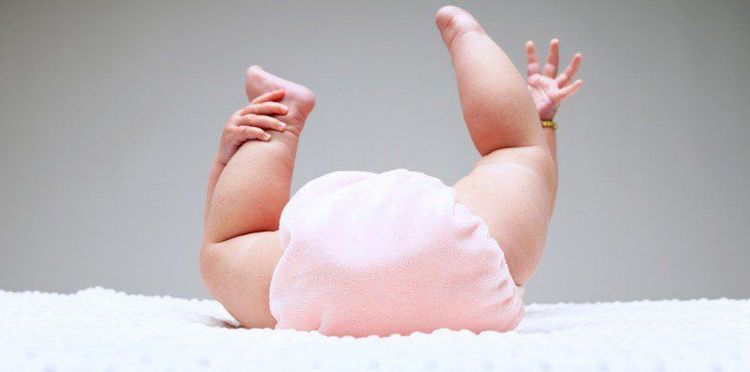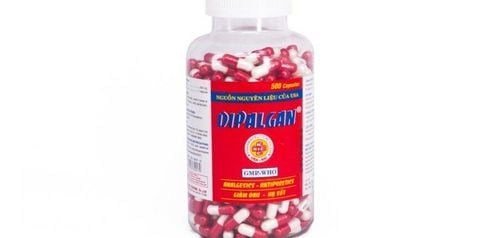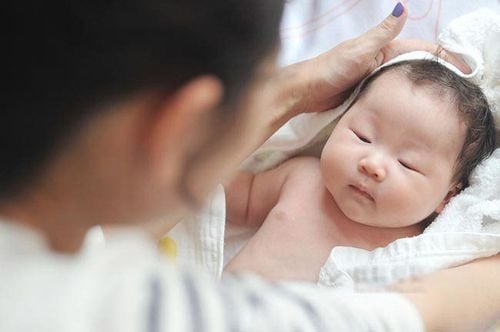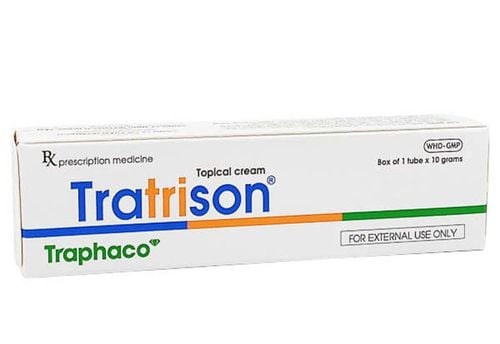This is an automatically translated article.
The article was professionally consulted by Specialist Doctor II Cao Thi Thanh - Pediatrician - Department of Pediatrics - Neonatology - Vinmec Hai Phong International General Hospital. Dr. Thanh has worked for 25 years in the treatment of neonatal pediatric diseases.Due to the weak resistance and not yet adapted to the external environment, newborn babies are often susceptible to diseases. Some mild diseases can be treated at home, but parents must know the causes and warning signs to be able to handle, absolutely do not arbitrarily use drugs and antibiotics without indications. doctor. Some of the common health problems in babies that parents need to be aware of.
1. The habit of defecation
In the first days after birth, the stool of a newborn baby has many changes related to color and texture. Therefore, it is necessary to monitor the child's stool every day through the following characteristics:Color: Newborn babies often have black or green-black, flexible and sticky stools, called meconium. After passing meconium in the first 24 hours after birth, the baby's stool gradually turns yellow-green. Breastfed infants have bright yellow, grainy stools with small particles. Consistency: Before solid foods are started, your baby's stools will be liquid or mushy. Formula-fed babies often have yellow or brown film and are thicker than breastfed babies. When stools become dry and difficult to pass, parents need to add extra fluids to the child as this is a sign of dehydration. Frequency: Children are more likely to become constipated if they are fed too much cereal or drink a lot of cow's milk before their digestive system can handle it well. The FDA does not recommend giving cow's milk to babies under 12 months of age. Because a newborn's normal stools are usually loose or slightly thick, it's not easy to detect diarrhea in babies. The main signs are a sudden increase in stool volume and watery stools.

Trẻ sơ sinh rất dễ bị tiêu chảy do nhiễm trùng đường tiêu hóa
Between 3 and 6 weeks of age, some breastfed babies poop only once a week. This is normal because breast milk has very little waste and leaves little residue in the intestinal tract. Formula-fed babies should have a bowel movement at least once a day. Because formula-fed babies are more likely to become constipated, it is important to closely monitor the frequency and nature of stools.
2. Navel care
The umbilical cord is responsible for transporting oxygen and nutrients from the mother to the fetus during pregnancy. After birth, the umbilical cord will be cut off, the rest of the umbilical cord will dry out and fall off in about 10 days to form the belly button.Accordingly, parents need to follow the advice of medical staff on how to properly care for the umbilical cord in infants, including:
Keep the umbilical cord dry and clean. When wearing a diaper, it is necessary to fold the top edge down, not covering the navel. Clean the remaining umbilical cord gently with a damp cloth or alcohol-soaked cotton cloth. Parents need to contact a pediatrician immediately if they find the umbilical cord leg is swollen, red and oozing pus.
3. Abdominal pain due to spasm
Many babies cry at night, but if your baby is fussy all day and is hard to calm, there's a good chance the baby has a medical problem. According to the AAP, 1 in 50 babies have colic between 2 and 4 weeks of age. At that time, the baby may cry or scream, stretch and burp. The baby's belly may bulge out.
Trẻ quấy khó nhiều có thể là dấu hiệu của đau bụng
4. Diaper rash
Eczema around the diaper area is quite common. This sign may appear due to skin irritation from prolonged contact with feces and urine. This condition may get worse if the child has diarrhea. Diaper rash can often be prevented with frequent diaper changes.Some of the recommended measures in children with diaper rash include:
Wash the skin with warm water, using soap after each bowel movement. Because wet wipes can leave a layer of bacteria on the skin, they are not generally recommended. Keep the diaper rash as dry as possible by taping the diaper loosely around the hip or removing the diaper completely when your baby naps. Place the infant on a towel to absorb the urine. When diaper rash appears for more than 3 days or the child has more severe symptoms, parents should take the child to a medical facility for advice and appropriate treatment.
5. Vomiting
Regurgitation is a common condition in infants and is not usually a sign of serious illness. After feeding, the mother should keep the child sitting in an upright position for a while and need a handkerchief to wipe off if the child vomits. If the child shows the following symptoms, the mother needs to take the child to the medical center soon:Not gaining weight steadily Swallowing food out of the mouth much, forcefully and continuously

Nôn trớ kèm không tăng cân là triệu chứng nguy hiểm ở trẻ.
6. Teething in babies
The first baby teeth usually appear when the baby is about 6 months old. During the first few years, 20 baby teeth will erupt one by one, and the child will have all the teeth by the time he is 3 years old.The four front front teeth usually appear for the first time around 6 months of age, although some babies don't get their teeth until 12 or 14 months of age. When teething, babies often cry, have trouble sleeping, refuse to eat and drool more than usual. If the infant has a fever or diarrhea during teething, parents need to take the child to a medical facility immediately.

Mọc răng có thể gây sốt và không chịu ăn ở trẻ
7. Jaundice
Neonatal jaundice is defined as an abnormal yellow coloration of the skin, eyes, and sublingual mucosa. A build-up of bilirubin, a waste product produced in the body from the breakdown of red blood cells.Normally, the liver is the organ responsible for detoxification that helps remove bilirubin from the body. But for many babies, in the first few days after birth, the liver is not working properly. As a result, bilirubin levels in the blood rise and jaundice occurs.
Although, this is a physiological condition in infants, too high bilirubin levels can cause brain damage. Therefore, all newborns with jaundice should be closely monitored. If it is physiological jaundice, the child may not need treatment. The baby's liver will gradually stabilize and quickly eliminate bilirubin in the following days. Conversely, in some cases, the doctor may prescribe light therapy to destroy the bilirubin structure inside the body.
If the newborn appears jaundice, parents should contact the doctor to know the danger signs and when to take the baby to the hospital. The severity of a jaundice cannot be determined by looking at skin color alone. Therefore, it is important to contact your doctor to check the level of jaundice with some basic blood tests.

Xét nghiệm máu giúp chẩn đoán tình trạng vàng da ở trẻ
In order to prevent diseases that young children are susceptible to, parents should pay attention to a diet to improve children's resistance. At the same time, add supporting foods containing lysine, essential micro-minerals and vitamins such as zinc, chromium, selenium, B vitamins,... snacks and less digestive problems.
Parents can learn more:
Why do you need to supplement Lysine for your baby?
The role of zinc - Guidelines for reasonable zinc supplementation
Please visit the website Vinmec.com regularly and update useful information to take care of your baby and family.
References: healthychildren.org, nichd.nih.gov














